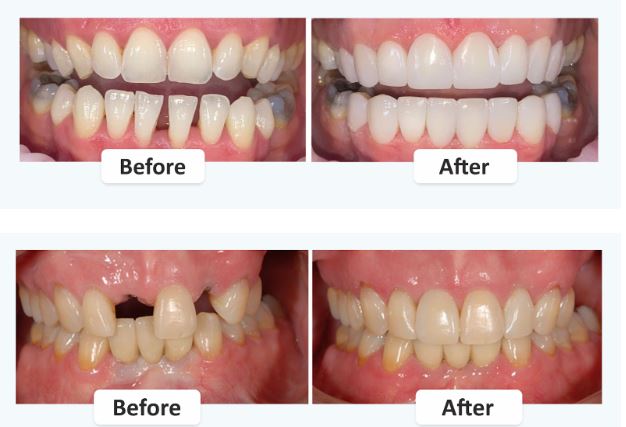Introduction To Dental Crowns
A dental crown refers to tooth-shaped cap that is attached over a damaged tooth. It helps to restore the appearance and functionality of the damaged tooth. Dental crowns are used to treat various dental issues such as chipped, broken, worn teeth, and to cover dental implants.
They are used to provide support to weak teeth or people who have undergone root canal treatment. Crowns can further used to restore the size, shape, and color of broken or discolored teeth along with enhancing your smile.
People may choose from different variety of materials for crowns such as zirconia, porcelain, or even a combination of metal and porcelain. Metal crowns that are made from porcelain-fused-to-metal crowns are popular for their durability whereas monolithic zirconia crowns are resistant to fracturing and chipping.


The process of getting a dental crown
The process of getting a dental crown in Plano may have several steps that include the following:
- Preparing the tooth
- Taking impressions
- Crown fitting
Step 1: Prepare the tooth
In this step, the dentist will remove some tooth enamel that will make space for a crown. After that, they will fill parts of the tooth and then take X-rays of the tooth along with the surrounding bone.
Step 2: Take impressions
This step involves taking the tooth impression along with the surrounding teeth. Mostly, the impression is taken from a digital scanner or a putty-like material. After taking the impression, it is sent to a dental lab that helps to create the crown.
Step 3: Crown fitting
In this step, the dentist will remove the temporary crown and will check the shape, and color, along with the fitting of the permanent crown. To fix the permanent crown, the dentist will use adhesive or dental cement that will help to fit the crown in its place.
Once the dental crown procedure is finished, you must wait for at least 30 to 45 minutes before eating. It is advisable that you avoid chewing for a few days from where the crown has been placed. After some time, the crown will function like a regular tooth. You need to follow the essential dos and don’ts after getting dental crowns for better results.
Understanding the benefits and limitations of dental crowns
Dental crowns are popularly known as dental caps that improve the overall dental restoration along with the appearance of the teeth. Further, they are used to replace worn-out fillings and cracked teeth.
- Benefits of dental crowns
Some advantages that dental crowns provide are as follows:
- Dental crowns help to restore functionality such as strength and structure of teeth that can help to improve bite function.
- Crowns help to protect teeth from breaking and also prevent cavities.
- Crowns also help to correct spacing, shape, and discoloration.
- Dental crowns are used to correct shape, spacing, and discoloration.
- With proper care and maintenance, dental crowns can last for 10 to 15 years.
- Limitations of dental crowns
Dental crowns come with certain limitations also. Some are as follows:
- When you place a crown, it requires removing some portion of your natural tooth structure that is permanent.
- At times, dental crowns may be expensive. However, the overall cost will depend on the type of material used.
- Sometimes, when the tooth is filed too thin, then there is a risk of nerve damage.
Looking for dental crowns? Book an appointment
If you are looking for a dental crown, then Dentist in Frisco may help you find a one-time solution for your damaged teeth. They will suggest you good practices for oral hygiene that may help to reduce your pain and enhance your smile. Schedule an appointment today if you need any advice on when to get a dental crown and how it can be beneficial for you.
FAQs on dental crowns
1 . How long do teeth last under a crown?
A dental crown may last from 5 to 15 years. However, how long dental crowns last may vary depending on your oral hygiene, type of crown, lifestyle, location, and any trauma that you may have experienced.
2. How many crowns will a dentist do at once?
The number of dental crowns that a dentist will place at once will vary depending on the needs of the patient, manufacturing process, and oral hygiene of the patient. However, a dentist can place 2 to 3 crowns per day. If a patient requires more crown placement, then it requires multiple visits.
3. Are crowns painful to put in?
The short answer is no. Getting a dental crown is not painful, as your dentist will numb the area with local anesthesia before the crown procedure.
4. Does permanent crowns look natural?
Yes, permanent dental crowns are designed in such a way that they look natural and will blend in with your natural teeth. Dentists will create crowns that will match with the size, shape, and color of your teeth.
5. How long does it take for a crown on a tooth to feel normal?
A dental crown will take a few days to some weeks to feel normal. Sometimes, dental crowns may even take a month for a crown to feel normal and natural.
